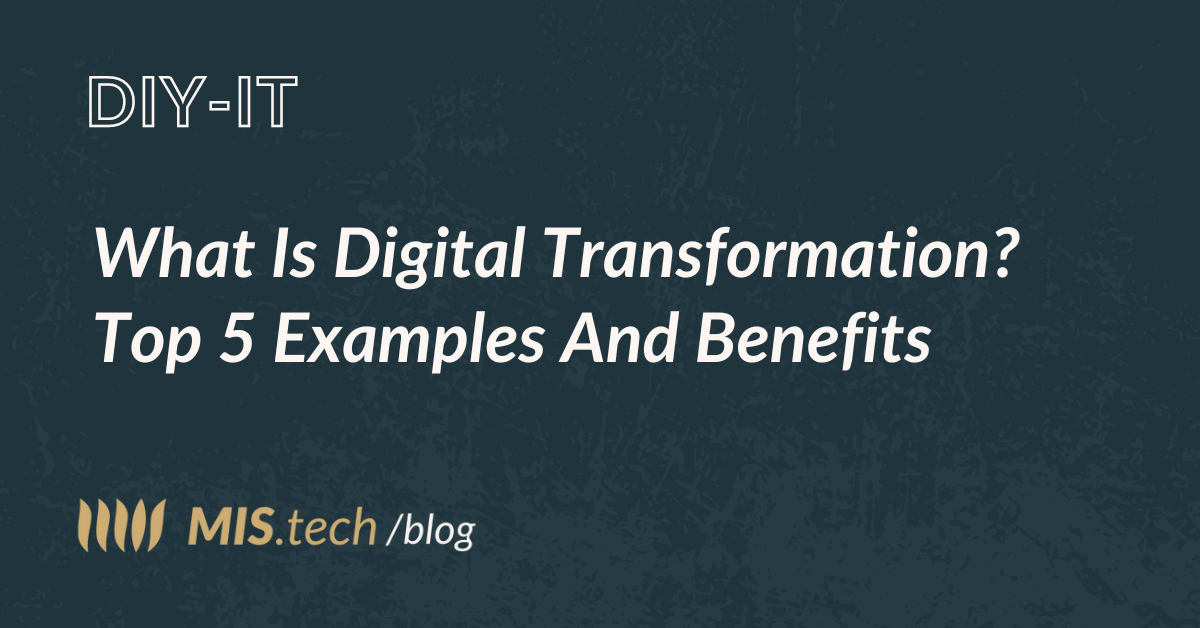Digital presence is a must for any business nowadays.
It’s what people base their first impression on – your website, online footprint, and how you present yourself digitally.
In the past, people used yellow pages to look up businesses.
But now, if someone wants to find out something about you, all they have to do is Google you.
And if they can’t find you properly online, at best they’re going to judge you for it. And at worst, you’re going to lose out on potential customers.
How did we get here from the era of yellow pages and why is this important for your business?
Read on to learn:
- What is digital transformation, anyway? How we got here from yellow pages
- Going from zero to one with your digital transformation: Why it’s important to start with these basics first
- Top 3 digital transformation areas and how this affects you
- Other digital transformation examples to consider and how these benefits can affect you
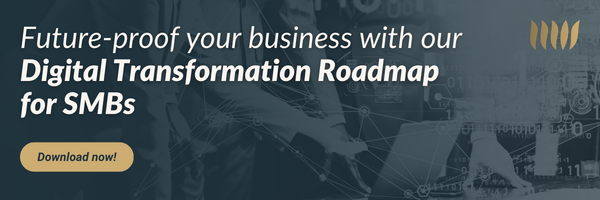
What Is Digital Transformation And How Did We Get Here?
We have transformed everything in our lives due to digital transformation.
Whenever people are looking for something new, whether it’s fast food or an IT organization, the first thing they do is look up reviews on Google Maps or Yelp.
And if you’re not on there, you’re missing out.
Digital has changed not only how we do business, but how we judge businesses. To understand that on a deeper level, we need to zoom out for a wider perspective.
For contrast, this is what websites looked like in the 1990s and 2000s.
To put things into perspective, you can use the Wayback Machine to see what websites looked like in the past.
Back then, many organizations didn’t even have websites.
The ones that did? They were very basic and at the time, no one cared. Even if your website looked like this:
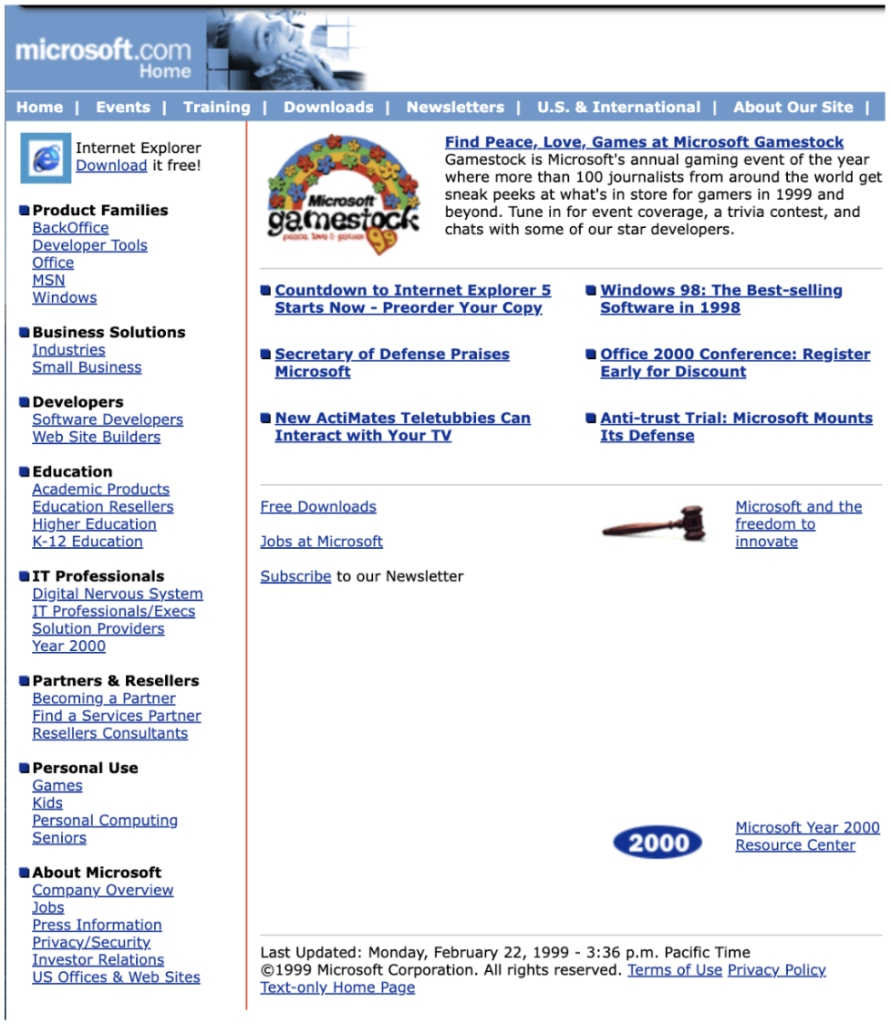
That incredibly basic layout is Microsoft’s home page in February 1999. Basic as it seemed, this was just the beginning.
Going from zero to one with your digital transformation
One of the most important steps a new business should take first is establishing their digital footprint.
When we end up partnering with someone who doesn’t have a digital footprint, the very first few things we recommend doing is setting up Gmail, getting a domain, a website, and so on.
Then, if your files aren’t all digital, you’re also going to have a tough time growing as a business.
Because, the alternative is having to go to the office every time you want the latest documents and files.
So, it all starts with having the right IT strategy first.
Overall, digital transformation is changing everything, including how we consume media and do business.
We went from carrying around bulky devices to having access to everything online.
The convenience and efficiency benefits are clear. However, there are also some security concerns that we’ll cover below.
Importance of a digital footprint
In the 21st century, people will judge companies not only on whether they have a digital presence but the depth and quality of it, too.
According to Zippia research, 75% of people judge a company’s credibility based on its website, and 94% of site first impressions are design-related.
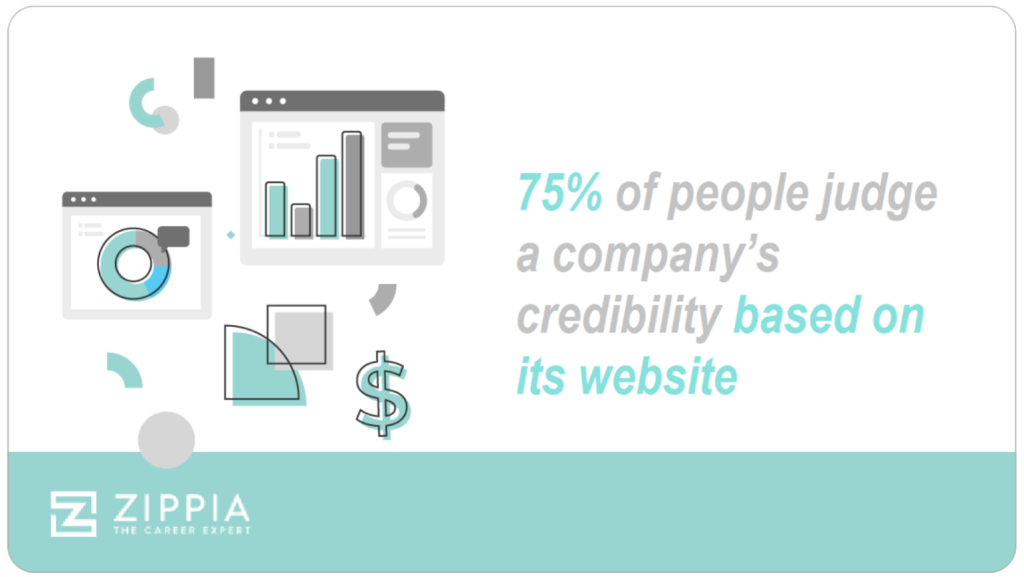
The numbers make it bold and clear: businesses can’t afford to miss out.
Having a digital presence requires more than a plain old website. You can’t get away with that Microsoft in 1999 look anymore – obviously.
There are a myriad of points any business has to get right, including:
- An on-point design that converts visitors into paying customers.
- User-experience that makes it easy for users to navigate through your site.
- Cybersecurity essentials that make the whole thing safe, and more.
That said, merely having a good website isn’t enough anymore.
That’s because over 80% of consumers research a product or service online before making a purchase.
Yelp or Google Reviews are often the first things consumers look at before a purchase.
A TechJury article showed just how big Yelp is. While the same article states that 63.6% of consumers will likely check Google reviews before visiting a location, it also shows Yelp has:
- 178 million visitors every month.
- 244 million reviews posted in 2021.
- Revenue reaching $1.15 billion in 2022.
- 82% of people visit with the intention of buying.
The chart below shows the stark contrast between total Yelp reviews in 2009 and how they’ve climbed through 2021, with the cumulative number of reviews going from just under 9 million to 244 million and counting.
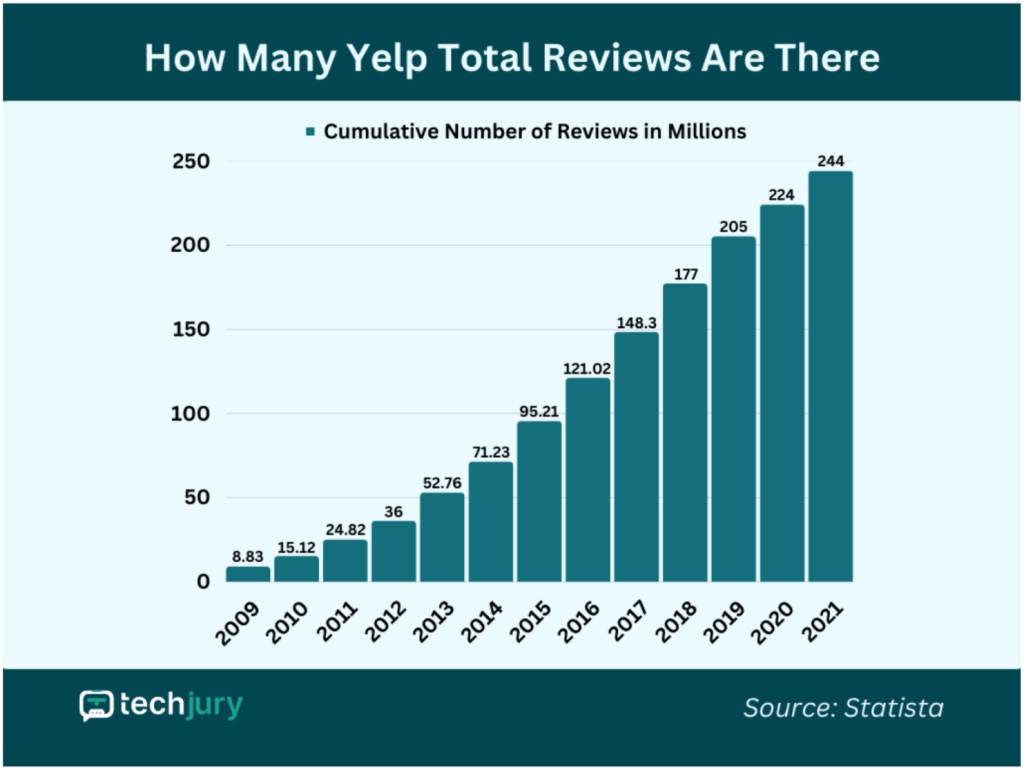
This trend extends to service providers, delivery services, and other businesses that need a digital presence.
It’s not optional anymore, if you want to survive in the competitive landscape nowadays, you need a digital footprint.
Digital transformation security challenges
The uptick in digital transformation also means you need to be prepared from the security side.
Every transformation comes with its own unique set of challenges. When it comes to an organization’s digital footprint, keeping that footprint secure is key.
As you scale your business digitally, you become exposed to a wider attack surface.
That said, the benefits of digital transformation still outweigh any potential issues by far.
You can defend your business with best digital security practices like:
- Two-factor authentication (2FA) to make sure people trying to gain access to an online account are who they say they are.
- Firewalls to monitor and filter incoming and outgoing traffic based on security policies.
- Updating operating systems so you’re not at risk of outdated cyber attacks.
It might seem like a lot to keep track of, but in the digital world, a business today must be agile and adaptable.
And as mentioned above, the benefits far outweigh any costs or issues that come with digital transformation.
For more info on implementing cybersecurity best practices for a more robust security posture, covering topics such as:
- Risk assessment.
- Penetration testing.
- Posture assessment.
- Vulnerability and compliance assessment.
- And more.
Get in touch for a free cybersecurity assessment intro!
Before and after examples of digital transformation in business
Let’s take a look at an example of digital transformation in business operations.
Before, if you wanted to sign a contract for a client to sign, you’d have to:
- Print out a contract.
- Get an envelope.
- Put a stamp on it.
- Send it to a client and hope it doesn’t get lost along the way.
- Then, they sign it and send it back to you…
Meanwhile, nowadays, the whole thing can be done in a minute with tools like DocuSign.
Thanks to digital transformation, people can now just:
- Click to sign in via Gmail.
- Sign a document digitally and send it over instantly over email.
It’s that simple.
Here are some other examples and benefits of digital transformation it’s common to see nowadays.
Top 3 Digital Transformation Technology Examples For Businesses And Their Benefits
Businesses and organizations across various sectors continue implementing digital transformation strategies to remain competitive.
So, “digital transformation” is not a buzzword anymore. It’s essential for any business that wants to succeed and gain a plethora of benefits at very little cost.
1. Digital payment systems and online banking
Cash is no longer accepted in many places.
According to Mastercard, reducing the use of checks by 10% could save the industry up to $1.2B a year.
Whether your business is B2B or B2C, you can streamline payment systems and get paid faster by adopting digital payment systems.
Our own accountants have moved onto tools like QuickBooks which work in the cloud.
Using a cloud-based accounting system, rather than manual spreadsheet entry is a great way to provide up-to-date data from anywhere and quicker payment processing.
From there, you can look for other, manual payment processes you can eliminate (e.g. paper checks).
It may just be that someday, we won’t be trading physical dollars anymore, but rather, ones and zeroes.
2. On-the-go entertainment and media
Cloud adoption and evolving IT infrastructures also directly affect media and entertainment industries.
Prior to COVID, the media and entertainment industry was already experiencing a growing demand for online content.
Now, post-pandemic, the focus is on accelerated adoption and quick consumption.
Everything is digital and just a few clicks away.
How does this affect you as a business?
The digital transformation of the entertainment industry also means:
- Advertisers being able to manage and buy ads faster and easier.
- Being able to collaborate with other brands through a wide variety of digital tools.
- For users to experience automated personalization, based on what they consume and what ads they’re being targeted to.
- Having access to real-time analytics based on users’ behavior.
All this in mind, you can then optimize and improve your operations as a business, no matter your location or industry.
3. Contract management
Gone are the days of using pen and paper to sign and manage contracts.
Instead, you can use tools like DocuSign to store, manage, search, and write up contracts for clients remotely.
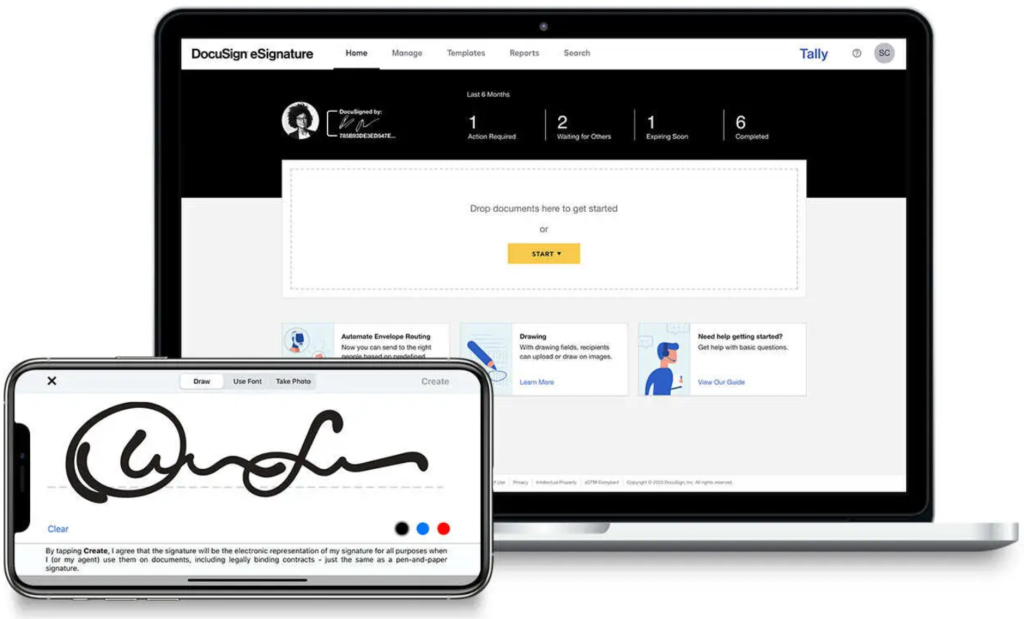
Then, you can send your clients a contract that they can sign without skipping a beat.
If they don’t have a DocuSign account, they can instantly sign up by signing up with Gmail, which also takes a click.
E-signatures cover the full range of technologies and solutions to create signatures electronically, with a variety of capture methods such as:
- Clicking “I Agree” on a website.
- Signing with your finger on a mobile device.
- Typing your name or PIN into an online form.
- Using an e-signature solution like DocuSign eSignature.
Finally, electronic signatures are valid in all U.S. states and are granted the same legal status as a handwritten signature.
Other Digital Transformation Examples And Processes In Businesses
Digital transformation efforts won’t be going away anytime soon, and if anything, are likely to accelerate.
This means other areas, such as our regular day-to-day tasks will be affected by the digital transformation in a positive way.
Some other examples of digital transformation in business and their benefits include:
- Remote work and collaboration: Collaboration tools like Zoom, Microsoft Teams, and Slack enables seamless collaboration for remote teams. Allowing for remote work from anywhere as long as you have an internet connection.
- eCommerce and online retail: Businesses can now reach a global audience, offer personalized experiences, and streamline transactions.
- Data analytics and business intelligence: This enables businesses to collect and analyze vast amounts of data. Advanced analytics also offer insights into customer behavior, market trends, and operational efficiency.
- And more: Other areas digital transformation directly affects include the Internet of Things (IoT), automated customer service, customer relationship management, and other, too many areas to count.
So, to recap, digital transformation has affected every aspect of business and society, fundamentally changing how we operate, communicate, and engage with the modern world.
As technology continues to evolve, businesses must remain agile, adaptive, and open to change if they don’t want to get left behind.
Where To Go From Here
That said, with so much changes advancing at near-warp speed, it can be hard to keep up.
Especially if you’re managing a small business and have to worry about your operations, hiring, team metrics, and more.
If you’re reading this and you’re not sure where to start, you can’t go wrong with the essentials, such as:
- Your website and domain.
- Setting up an email and communication system.
- Clear, and user-friendly design.
- Technical optimization.
- SEO.
- And more.
From there, you need the right IT infrastructure to scale your business.
Not sure where to start?
We provide all-inclusive IT solutions for businesses wanting to simplify their IT.
Book a free consultation and get started with your custom IT strategy today!

